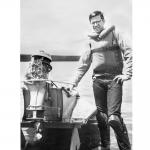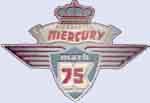My e-mail just alerted me that someone had posted here, after a long period of inactivity. After looking at Tom's entry, I looked back at some others.
Sam, are you still here? You indicate that the A Konigs were deflector motors before 1960, but I have a copy of Boat Sport from 1957 which has an article on the "new" A Konig. It looks just like the ones from the early '60s (other than the pipes, and having the carbs mounted vertically), and the engine internal drawing shows it to be a looper. If anyone here is restoring one of these engines and has no good access to Boat Sport, give me a PM and I'll shoot you a copy of the article.
I think I have what's left of one of these first-version blocks. You wouldn't believe it: all of the water jacketing is formed by drilling in from the deck surface, parallel to the bores!! The funny thing is, none of these holes are interconnected, except by a shallow channel around the inside of the head. The water just kind of shook in place!! This first A was rated at 25hp, which might have been optimistic, and maybe not for long. By the mid-'70s, Ron Anderson was getting something like 67hp from the single-pipe A of those days, with considerable longevity (he and Lee Sutter were running it) which is surprising, considering how spindly those crankshafts were. At one time I had what I took to be a second-generation block (raced by Jack Livie, and now in the hands of Buzz or Alan Thorsen, maybe). This version had much better cast-in water jacketing, and looked about like the early-to-middle '60s engine shown in the photo above except that it had no boost-port, just the two transfer ports and the exhaust.


 Thanks:
Thanks:  Likes:
Likes: 



 Reply With Quote
Reply With Quote





Bookmarks